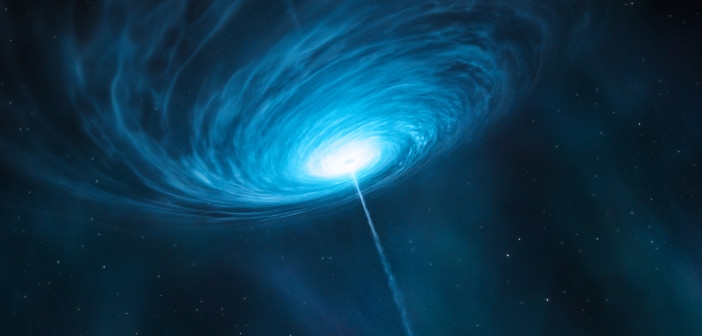Dance of Two Monster Black Holes
27 March, 2016

Artist’s impression of a quasar. In the quasar OJ 287, a secondary supermassive black hole orbits the primary, occasionally punching through the accretion disk surrounding the primary. [ESO/M. Kornmesser]
This past December, researchers all over the world watched an outburst from the enormous black hole in OJ 287 — an outburst that had been predicted years ago using the general theory of relativity.
Outbursts from Black-Hole Orbits
OJ 287 is one of the largest supermassive black holes known, weighing in at 18 billion solar masses. Located about 3.5 billion light-years away, this monster quasar is bright enough that it was first observed as early as the 1890s. What makes OJ 287 especially interesting, however, is that its light curve exhibits prominent outbursts roughly every 12 years.
See full text